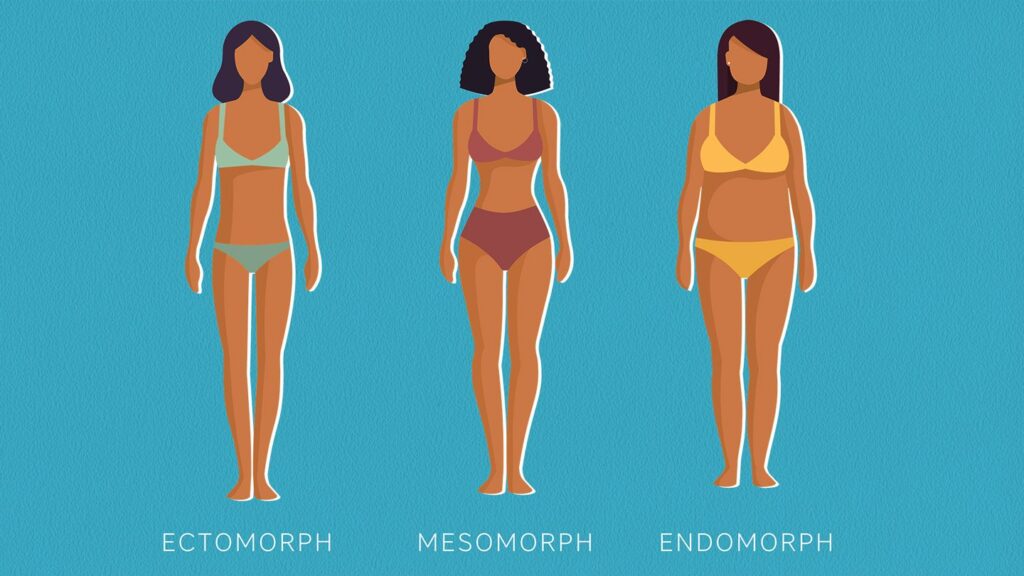
When it comes to health and fitness, one-size-fits-all advice rarely works. While workout routines and diet plans flood the internet, the most effective strategies are often rooted in your individual physique. Learning how your body naturally operates can give you a massive advantage when it comes to setting realistic goals and creating a plan that sticks.
In fitness science, a widely accepted way to categorize the human physique is through three somatotypes: ectomorph, mesomorph, and endomorph. Each of these body types carries distinct characteristics that affect metabolism, fat storage, muscle growth, and even energy levels. Understanding your body type isn’t about labeling—it’s about tailoring your strategy to align with your biology.
What Are the Three Body Types?
The concept of body types was introduced by psychologist William H. Sheldon in the 1940s. He proposed that everyone fits into one of three somatotypes, or a blend of them:
Ectomorph: These individuals tend to be lean with long limbs and small joints. They have fast metabolisms and often struggle to gain weight or muscle. While they may find it easier to stay slim, they need to work harder at building strength.
Mesomorph: Often considered the “ideal” athletic build, mesomorphs are naturally muscular, with broad shoulders and narrow waists. They gain muscle easily and lose fat with less effort, making them highly responsive to exercise.
Endomorph: Endomorphs have a higher tendency to store fat, particularly around the hips and abdomen. They often have rounder physiques and may find weight loss more challenging. However, they are also capable of building strength quickly.
It’s essential to note that most people are not purely one type. Instead, they fall somewhere along a spectrum, such as ecto-mesomorph or endo-mesomorph, combining traits from two categories.
How Body Types Affect Fitness and Nutrition
Understanding your body type can be a game changer in designing your workout and nutrition plans. Each type reacts differently to food, exercise, and rest.
Training for Ectomorphs:
- Focus on resistance and strength training to build muscle mass.
- Limit excessive cardio, as it can make it harder to gain weight.
- Stick to compound lifts and short, intense workout sessions.
Nutrition for Ectomorphs:
- Higher caloric intake with a focus on protein, healthy fats, and complex carbs.
- Frequent meals and snacks to maintain energy.
- Post-workout shakes to support muscle recovery.
Training for Mesomorphs:
- Mix of strength and cardio training works well.
- Respond quickly to changes in workout intensity.
- Ideal candidates for high-intensity interval training (HIIT).
Nutrition for Mesomorphs:
- Balanced macronutrient intake.
- Maintain muscle with lean protein and moderate carbs.
- Can adjust easily to bulking or cutting plans.
Training for Endomorphs:
- Focus on fat-burning workouts like HIIT and steady-state cardio.
- Strength training to boost metabolism.
- Active lifestyle to prevent weight gain.
Nutrition for Endomorphs:
- Lower carb, higher protein and fat intake.
- Portion control and mindful eating.
- Time-restricted eating may support fat loss.
Understanding these nuances allows individuals to make more informed choices. For example, an endomorph shouldn’t be discouraged by slower weight loss—rather, they should leverage strength training to enhance their metabolic rate.
Can You Change Your Body Type or Adapt Around It?
One common question is whether you can change your body type. While genetics do play a key role, your lifestyle choices can greatly influence your body composition.
You might not morph from an ectomorph to a mesomorph, but you can increase muscle mass, improve endurance, or reduce fat through consistent effort. Knowing your primary body type simply helps you start in the right direction.
Tips for Adapting to Your Body Type:
- Track your progress with photos and measurements rather than just weight.
- Adjust your goals and timelines to suit your natural strengths and challenges.
- Celebrate incremental progress, whether that’s better sleep, higher lifts, or improved energy.
Even more importantly, don’t fall into the trap of using your body type as an excuse. Instead, think of it as a foundation—a blueprint—for building your best self. Fitness is about progress, not perfection.
Additional Considerations
Hormonal Influence: Hormones such as cortisol, insulin, and testosterone can affect how each body type reacts to stress, exercise, and food.
Age and Body Type: As we age, our metabolism changes. An ectomorph in their 20s may start to experience endomorphic tendencies in their 40s due to reduced activity and hormonal shifts.
Sleep and Recovery: Recovery needs vary by body type. Endomorphs may need more effort to reduce inflammation, while ectomorphs must ensure sufficient protein synthesis overnight.
Mental Health Connection: Frustration often arises from mismatched expectations. Knowing your body type can bring a sense of empowerment, reduce self-comparison, and improve mental well-being.
Final Thoughts
Knowing your body type—whether ectomorph, mesomorph, or endomorph—can dramatically improve the results of your fitness and nutrition efforts. While your genetics set the baseline, your habits shape the outcome. By aligning your strategy with your natural tendencies, you’ll be able to set more realistic goals, stay motivated, and achieve sustainable health improvements.
Don’t strive to change who you are. Instead, embrace your body type, play to your strengths, and build a healthy lifestyle that supports your unique self.
